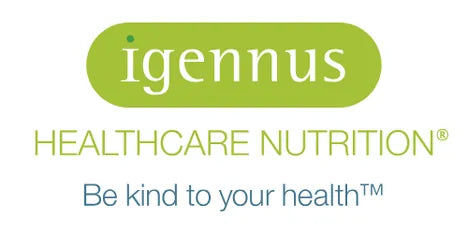We’ve finally made it to the third and final part of your health reset. Perhaps you have made some small changes to your diet: increased your fruit and vegetable intake; incorporated more organic foods; added more herbs and spices, whilst naturally reducing your caffeine and alcohol intake in favour of hydrating with more water. If so, you have likely also started to consider the ways in which you can find more balance in your life and are creating time for yourself, with a few earlier nights and more outdoor activities. As a result, you should be nearing the end of January feeling a lot more positive and vibrant, with a positive mindset for the year ahead.
If this does not sound like you, fear not. It can take time to make changes to your diet and lifestyle, especially if it is a stressful and busy one, and some habits are simply harder to break than others. Do not let this put you off though. If you can achieve one positive change at a time, you are still taking steps in the right direction; health is not a race,after all.
If you are feeling the benefits of making the changes suggested in part 1 and part 2, this final part will help to tie together all that you have learnt this far, with a few more thoughts on achieving longevity.
Understanding the process of detoxification
Whilst we have discussed some of the biggest sources of toxins to the body, the benefit of reducing your toxic load and the clinical use of foods with antioxidant potential in protecting the cells from toxins, there are many other nutrients that further support the body’s ability to eliminate toxins. Before we look at what they are, let’s discuss the actual process of detoxification.
There are three phase to detoxification: phase I transforms a compound to a form which can be further transformed by phase II, generally a more reactive form requiring the support of a group of enzymes known as CYP450; phase II transforms the reactive compound to a safer compound that the body can eliminate; phase III includes the use of the bowels and kidneys in their ability to eliminate the final compound.
Phase I
Phase I of the detoxification process requires the mineral iron to support the ability of CYP450 enzymes to convert a compound ready for phase II of the detoxification process. As this process creates reactive compounds, antioxidants become important, with minerals copper, zinc, iron, manganese and selenium all important here, along with the amino acid cysteine.
Phase I detoxification processes can be induced by cigarette smoke, alcohol, drugs and caffeine, and whilst it may seem like a positive step to induce phase I, it is important to keep a healthy balance between phase I and phase II liver detoxification processes. If phase I is quick but phase II is slow, you could accumulate a build-up of reactive toxins which cannot be neutralised as quickly.
Phase II
Whilst phase II of the detoxification process works to transform a compound from being reactive to being safe for elimination, numerous metabolic pathways are utilised to achieve this, each one requiring a different set of nutrients. Whilst some of these work on one compound, others may work on another; for example, acetylation works on neurotransmitters, caffeine and medication, whilst glucuronidation works on medication, cigarette smoke, alcohol, hormones and endocrine disrupting chemicals (EDC’s) present in plastics, beauty care products and also found in pesticide and herbicide sprays commonly used on non-organic fruit and vegetables. The nutrients required for the many metabolic pathways that occur during phase II liver detoxification include, but are not limited to, vitamins B2, B3, B5, B6, B12; minerals zinc, magnesium, molybdenum, selenium, iron; amino acids cysteine, glutamine, glycine, methionine; glucose and sulfur.
Phase III
As previously discussed, phase III is required to eliminate the toxins that have gone through phase I and phase II detoxification processes, with use of the kidneys, bowels and skin. Considering the process of detoxification in this way, you can understand why it is important to ensure that the kidneys are receiving plenty of water to help filter out the toxins, the bowels are receiving plenty of fibre to produce a bowel movement, and your skin has the opportunity to perspire, all supporting phase III of the detoxification process. Furthermore, by reducing your toxic load using the steps illustrated in part-2 of the health reset, you are also reducing the burden placed on the body as a whole.
Translating the body’s needs to a balanced, whole-food diet of abundance
Your body and the process of detoxification cannot function optimally without the necessary nutrients required to perform this large task – you wouldn’t expect a mechanic to fix your car without any tools. There are many nutrients that support the health of the body, including those listed above, and whilst it can become easy to focus on specific nutrients and take them as a supplement, the key to a healthy diet is ensuring your meals are rich in all of these nutrients. Plus, when the diet is abundant in nutrients, there is simply not as much room for foods that don’t provide high nutrient content. Here are some quick tips to ensure your meals are packing a punch when it comes to nutrient content and supporting normal bodily functions, including detoxification:
Ensure you are eating enough protein every day
The liver needs protein to help safely remove alcohol, pesticides, medication, hormones and other toxins from the body. The amino acids required for phase II liver detoxification make up proteins, so it is important to ensure you are consuming enough to support this process. Plus, if you are hoping to trim your waistline to an ideal body weight this year, consuming adequate protein will support healthy weight loss by giving you that feeling of fullness for longer.
A day of adequate protein intake may start with an omelette for breakfast, beans in the form of hummus, with a handful of nuts or a nut butter for snacks, a homemade bean chili served with quinoa for lunch and a portion of salmon or tofu for your evening meal. If you are really struggling to meet your protein requirements from your diet alone, consider a protein powder such as whey, hemp or pea protein.
You can work out your protein requirement by multiplying your ideal body weight in kilograms by 0.8 to give you your minimum need in grams (more information can be found in this article). Then simply divide this up to ensure you are consuming roughly equal amounts of protein with each meal. Sources of protein include lean meats and seafood, nuts and seeds, beans and legumes, quinoa, eggs & dairy products and non-GMO (non-genetically modified) soy.
Obtaining the essential vitamins and minerals
As highlighted, there are numerous vitamins and minerals playing a role in supporting healthy detoxification processes in the body. The good news is, if you have already started to incorporate the tips from the previous parts of the health reset, you will already be obtaining many of these nutrients in your diet.
The food items listed above as sources of protein also benefit from providing a great source of many nutrients required for the detoxification process. For meat eaters, don’t dismiss the use of plant-based sources of protein which are powerhouses for many nutrients and easily added to meals regardless of your diet preference.
Soya beans provide an excellent source of many of the nutrients listed above and are a simple addition to any diet, coming in multiple forms. Miso can be used as a base for stocks, simply added to hot water for a warming winter drink, or even used as a marinade for your meat, fish or tofu; cooked soya beans can be blended with oil, garlic, basil stalks, lemon juice and stock to make a bean mash, or added to stir-fries and salads; tofu can be used as a replacement for meat in a stir-fry, for fish in a tofu kedgeree, or to make a tofu and spinach cannelloni.
Dark green leafy vegetables, including spinach, Swiss chard and collard greens, are some of the world’s most nutrient-rich foods providing a source of iron, copper, zinc, manganese, magnesium and vitamin B2 and B6, all of which are vital for the health of your detoxification organs. Here are some easy tips to incorporate more dark green leafy vegetables into your diet:
- Add spinach to a morning smoothie, the taste is barely detectable
- Make a batch of minestrone soup containing Swiss chard to either feed the family or divide into containers for lunch for the week
- Prepare a salad using spinach as a base, perhaps a spinach, avocado and prawn salad
- Spinach and kale can also be added to curries, stews and soups – a simple addition to increase the nutrient content
Here are some final tips to increase the nutrient content of your diet:
- Sesame, sunflower and pumpkin seeds are rich in minerals including iron, zinc, manganese, copper and magnesium. Add them to a trail mix of nuts (walnuts, cashews and almonds are also a rich source of nutrients), sprinkle them on salads, or add them to a homemade granola to benefit from these nutrient-dense foods
- Swap white long-grain rice for brown rice or quinoa to benefit from additional vitamins and minerals. Never used quinoa? It’s prepared in the same way as rice but cooked for slightly longer (up to 20 minutes) and has a delicious creamy texture
- Get adventurous with mushrooms that are also a great source of minerals and vitamins, opting for brown, Portobello or shiitake which can be added to Asian dishes
- Top up your levels of nutrients to ensure your body has all it needs to support health with Pure & Essential Advanced Multivitamin & Minerals, providing 22 vitamins and minerals in their most bioavailable forms.
Food – not just a source of vitamins and minerals
Final thoughts…
The health reset has set out to inspire you with some healthy and positive life-long changes to both your diet and lifestyle and we look forward to hearing about your progress. We do know, though, that health is not a case of ‘one-size-fits-all’. Some people can make changes more easily than others, some feel the benefits more quickly than others; some need more support; others have progress hindered by factors beyond their control (life events, medication, health conditions, genes, etc.). The key is to focus on you and not compare yourself to anyone else, as we all have completely different genetic make-up, outlook on life, not to mention stressors (or lack of) to deal with.








